Advanced Current Collector and Battery Management Connector Systems Cater to Exacting Requirements of Electric Vehicles and other Green Applications
Overview
The accelerating growth of electric-powered vehicles — including cars, trucks, motorcycles, buses, maritime vessels — and other applications is putting pressure on vehicle and battery makers to deliver more robust, compact and powerful battery modules.
This Tech Bulletin provides a brief overview of design methodologies for multi-cell battery modules in a variety of end applications; followed by a discussion of the new Cell-PLX™ interconnect technologies that are simplifying and transforming battery module design and manufacturing.
The Anatomy of Battery Modules
Battery module designs for electric vehicles (EVs) are complex and vary widely by manufacturer and specific end application. However, all of them fundamentally require robust mechanical and electrical component systems which perform the basic required functions of integrating and interfacing with the battery module (Figure 1).
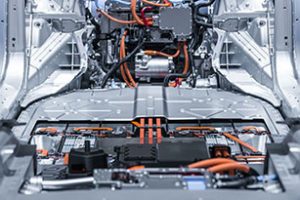
Battery modules typically consist of a large number of individual cells. Grouped together, they are connected to current collectors that gather the specified power output levels. The number of cells and power output of each cell are factors that determine the output that the power module can deliver.
As per the preferred designs of various battery module manufacturers, the individual battery cells may have different chemistry, physical shapes, and sizes. Battery interconnect systems must be able to connect all of the discrete cells in series and/or parallel to achieve the total specified voltage and current requirements for the complete battery module system.
Other components in the system interface with the cell arrays to support functions such as:
- Collecting the current
- Providing adequate electrical insulation
- Ensuring mechanical structure integrity
- Encouraging heat dissipation for thermal management of the cells
- Providing an enclosure in which to protect them
- Enabling a power connection to the vehicle powertrain propulsion system
Advanced battery modules for electric drive EVs and public transport vehicles can contain up to thousands of individual cells, increasing complexity of the overall system.
Evolution of Design Methods for Multi-cell Battery Modules
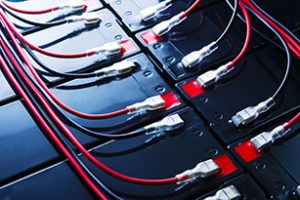
In recent years, battery module designs have undergone significant changes and enhancements, especially with regard to the interconnect methods for collecting current and providing external power connections.
Early methodologies employed the use of wiring harnesses, flexible circuits and wire bonding (Figure 2); however, these approaches have significant shortcomings:
- Slow assembly processes
- Difficulty in achieving robust connectivity to the cells
- Not suitable for high-volume production
- Reliability concerns, especially as battery modules increase in both size and complexity
Cell-PLX™ Technology Enables Robust Customizable Battery Designs
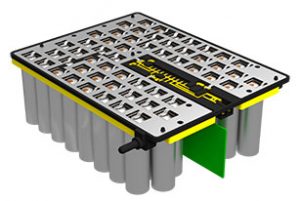
Battery Interconnect System
In order to meet the growing demands for EV cars, trucks, commercial transportation and other applications, battery design engineers are seeking out a more robust and adaptable interconnect technology that can handle the increasing variety of battery module sizes and designs.
Cell-PLX™ addresses this need with a customized battery interconnect system that is tailor-made for specific end application requirements (Figure 3). Not only is it suitable for use with cylindrical, prismatic or pouch battery cells, it also supports various current densities and cell array configurations. Robust packaging formats are made available to uphold battery module durability in high-vibration environments.
As a global solutions provider, ENNOVI’s design expertise and vertically integrated in-house production can help businesses accelerate their battery interconnect system’s time-to-market. In order to adequately cater to the growing range of advanced battery applications, the underlying interconnect implementation technologies must deliver both durability and a high degree of adaptability for application-specific requirements. Cell-PLX™ has been created from the ground up to provide maximum configurability for different form factors, sizes and performance requirements. Coupled with a wide range of material options for current collectors, dielectric layers and plating finishes, it can truly be customized to the exacting specifications required.
Customizable Features of Cell-PLX™
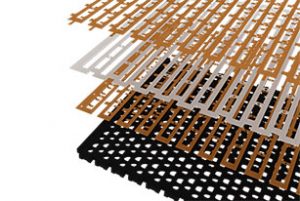
Cell-PLX™’s high-precision current collectors maintain the tight tolerances needed for reliable and long-lasting performance. The thickness of these current collectors can be customized to match the current density requirements of the battery modules. Positive and negative cell connection terminals on the current collectors provide a reliable means of attachment to the battery cells. These terminals can be formed down to cell level for laser weld or wire bond attachment.
In applications that require positive and negative terminals to both be on the same side of the battery cell, Cell-PLX™ can be configured with two current collectors separated by a dielectric layer (Figure 4), or a single thicker current collector.
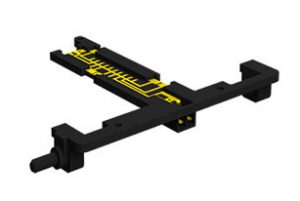
Using advanced high-speed manufacturing processes, the terminals can be thinner than the current collector itself. This assures ease of welding to the battery cells while maintaining strength and structural integrity across the entire current collector. Customized current collector designs make provisions for these terminals to be optimally positioned for mating with the cells. This, together with options for configurable cell holders that securely hold the battery cells in place, improves the quality and robustness of the connections. The cell holders can also be customized to incorporate the bottom dielectric layer, which can then be attached to adjacent layers by means of heat staking instead of pressure-sensitive and thermal activated adhesives.
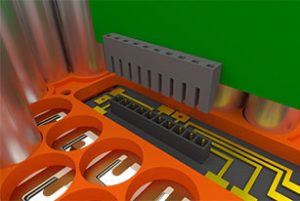
Cell-PLX™ technology also includes options for integrating custom-designed overmolded lead frames to connect Battery Management System (BMS) control boards to the current collectors (Figure 5). Various connection options between battery modules are possible as well, such as nut/bolt, pin/socket, and other customized configurations.
Other interconnect design options allow for passive and active component placement for safety and cell monitoring. This includes fuses, thermistors, most positive and negative interconnects, cell holder designs, signal interconnects or harnesses/circuits connecting to the control board.
Transforming Multiple Industries Across a Myriad of End Applications
The customizability of Cell-PLX™ battery interconnect systems enables this technology to add tremendous value in an extensive range of applications, including but not limited to:
- Aerospace – Electrification of civil aviation
- Automotive – EV cars
- Commercial Transportation – Buses, light trucks, tractor trailers, trains, subway systems
- Maritime – Boats, ferries
- Personal Mobility – Motorcycles, electric scooters, bicycles
- Energy – Storage of wind and solar energy
Summary
As battery applications in various industries rapidly advance, the need for robust and reliable battery modules with effective and efficient interconnects becomes a critical factor for success. Be it in EV transportation or other industries, ENNOVI’s Cell-PLX™ battery interconnect systems offers these key benefits:
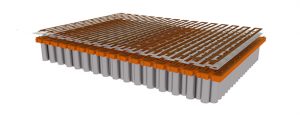
- Supports various current densities and cell array configurations
- Customized and tight-tolerance single/multi-layer current collector designs
- Designed for optimal laser weld or wire bond attachment methods
- Robust packaging formats for high-vibration environments
- Multiple module-to-module connection options
- Seamless integration of passive and active components for safety and cell monitoring
- Quick time-to-market with ENNOVI’s vertically integrated in-house production capabilities
For More Information
For more information, visit our Cell-PLX™ webpage, download our Cell-PLX™ brochure or drop us an email at communications@ennovi.com.
